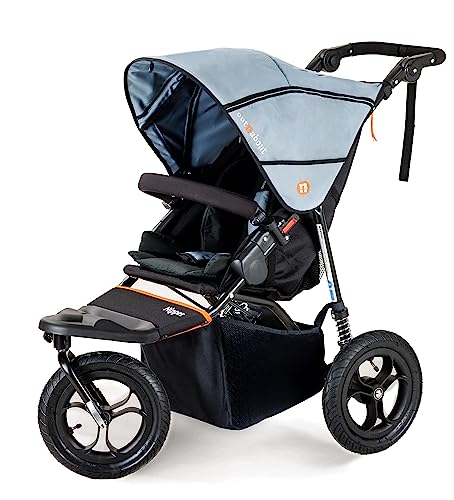Pram vs. Pushchair: Understanding the Key Differences
When it pertains to carrying infants and kids, parents frequently discover themselves overwhelmed by the numerous options readily available. Among these alternatives, prams and pushchairs are two of the most common forms of baby transport. While the terms are frequently utilized interchangeably, each has unique features and advantages that cater to diverse parenting requirements. In this short article, we will check out the essential distinctions in between prams and pushchairs, assisting moms and dads make informed choices about which is best matched for their household.
What is a Pram?
A pram, or perambulator, is a kind of baby carriage designed primarily for newborns and babies. Prams usually include a completely flat lying position, which is vital for newborns who require to lie flat for spinal development. Many prams come equipped with a deep, enclosed body that supplies a cozy and safe environment for the baby, frequently with extra functions such as hoods or covers to shield them from the elements.
Secret Characteristics of Prams:
- Flat Lying Position: Supports healthy spine advancement in newborns.
- Enclosed Design: Protects the baby from wind and sunlight.
- Standard Aesthetic: Often made from materials like wicker or fabric, offering a traditional appearance.
- Weight and Bulkiness: Generally much heavier and bulkier than pushchairs.
What is a Pushchair?
A pushchair, also referred to as a stroller or buggy, is developed for older infants and young children who can sit up unassisted. Pram Online Shopping enable for numerous seating positions, including reclining choices for naptime. They are normally lighter and more nimble than prams, permitting moms and dads to navigate hectic areas with ease. Numerous pushchairs feature adjustable deals with, storage compartments, and can typically be folded for practical transport.
Key Characteristics of Pushchairs:
- Seating Position: Designed for children who can sit up, with different reclining positions.
- Lightweight and Compact: Easier to maneuver and transportation.
- Adaptability: Many models are convertibles or can accommodate safety seat.
- Storage Features: Often include baskets for carrying diaper bags, toys, etc.
Secret Differences Between Prams and Pushchairs
Below is a relative table highlighting the important distinctions between prams and pushchairs.
| Feature | Pram | Pushchair |
|---|---|---|
| Target Age | Newborns to 6 months (flat position required) | 6 months to toddler age (sitting unassisted) |
| Design | Confined, conventional design | Open, contemporary style |
| Weight | Heavier, bulkier | Lighter, more compact |
| Seating Options | Flat only | Multiple positions consisting of reclining |
| Manoeuvrability | Less maneuverable due to weight | Extremely maneuverable |
| Storage Space | Limited | Generous beneath baskets |
Picking Between a Pram and a Pushchair
Consideration Factors:
- Age of the Child: Choose a pram for newborns and a pushchair for older infants and toddlers.
- Planned Use: If you plan to do a great deal of strolling or browsing city streets, think about a design that matches your way of life.
- Area: Assess the readily available storage in your house or vehicle and how compactly a design can fold.
- Budget plan: Consider the rate variety, as prams and pushchairs can vary extensively in expense.
- Functions: Look for additional features that may be beneficial for your daily life, such as cup holders, canopies, or simple folding systems.
Advantages and Disadvantages
Benefits of Prams
- Perfect for Newborns: Encourages healthy spine development.
- Comfy Space: Provides a cozy environment for babies.
Disadvantages of Prams
- Weight: Heavier and bulkier, making them less useful for everyday use.
- Restricted Use Time: Generally useful just for the first 6 months.
Benefits of Pushchairs
- Adaptability: Suitable for longer periods as the kid grows.
- Lightweight Design: Easier to bring and steer.
Downsides of Pushchairs
- Not Suitable for Newborns: Requires the kid to be able to stay up unassisted.
- Less Protective: Generally more exposed than a pram.
Often Asked Questions (FAQs)
1. Can I utilize a pushchair for a newborn?
The majority of pushchairs are not designed for newborns; nevertheless, lots of models come with infant safety seat adapters. Some pushchairs offer a totally reclining seat choice that might be suitable for babies, but ensure the manufacturer confirms it's safe.
2. Which is much better for travel?
Pushchairs are typically chosen for travel due to their lightweight and compact nature. They can often be folded quickly for transport on public transport and fit more readily in automobile trunks.
3. The length of time can I utilize a pram?
Prams are normally appropriate for babies until they reach around 6 months of age or when they can support themselves in a seated position.
4. Exist hybrid designs offered?
Yes, many manufacturers produce hybrid designs that can be converted from a pram to a pushchair depending upon the child's development phase.
5. What should I look for when purchasing a pram or pushchair?
When purchasing, think about safety features, ease of use, resilience, weight, and storage. It's likewise recommended to test different designs for comfort before deciding.
Picking between a pram and a pushchair eventually depends on the age of your kid and your lifestyle choices. Understanding their differences assists parents make informed options that cater to their family's requirements. Moms and dads can enjoy the journey of parenthood by making sure that their kid's convenience and security are always focused on, while likewise considering their own convenience and design.

